Automotive Applications for Embedded Vision
Vision products in automotive applications can make us better and safer drivers
Vision products in automotive applications can serve to enhance the driving experience by making us better and safer drivers through both driver and road monitoring.
Driver monitoring applications use computer vision to ensure that driver remains alert and awake while operating the vehicle. These systems can monitor head movement and body language for indications that the driver is drowsy, thus posing a threat to others on the road. They can also monitor for driver distraction behaviors such as texting, eating, etc., responding with a friendly reminder that encourages the driver to focus on the road instead.
In addition to monitoring activities occurring inside the vehicle, exterior applications such as lane departure warning systems can use video with lane detection algorithms to recognize the lane markings and road edges and estimate the position of the car within the lane. The driver can then be warned in cases of unintentional lane departure. Solutions exist to read roadside warning signs and to alert the driver if they are not heeded, as well as for collision mitigation, blind spot detection, park and reverse assist, self-parking vehicles and event-data recording.
Eventually, this technology will to lead cars with self-driving capability; Google, for example, is already testing prototypes. However many automotive industry experts believe that the goal of vision in vehicles is not so much to eliminate the driving experience but to just to make it safer, at least in the near term.

Next-gen Fleet Telematics and Dashcams Shift to On-device AI
This blog post was originally published at Ambarella’s website. It is reprinted here with the permission of Ambarella. The role of dashcams has changed significantly over the past decade. What began as a passive recording device has become an active, intelligent safety and operations tool. This evolution is being driven by edge AI—the ability to
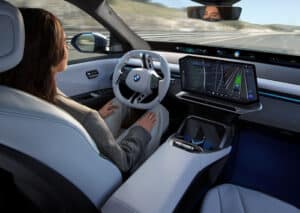
Qualcomm and BMW Group Unveil Groundbreaking Automated Driving System with Jointly Developed Software Stack
Highlights: AI-enabled Snapdragon Ride Pilot Automated Driving System, powered by Snapdragon Ride system-on-chips and a new jointly developed automated driving software stack, debuts in the all-new BMW iX3 at IAA Mobility 2025. System is validated in 60 countries worldwide and is targeted to be available in more than 100 countries by 2026. Scalable platform enabling
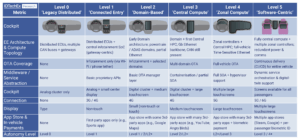
Software-defined Vehicles: Built For Users, or For the Industry?
SDV Level Chart: IDTechEx defines SDV performance using six levels. Most consumers still have limited awareness of the deeper value behind “software-defined” capabilities The concept of the Software-Defined Vehicle (SDV) has rapidly emerged as a transformative trend reshaping the automotive industry. Yet, despite widespread use of the term, there remains significant confusion around its core
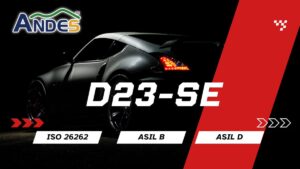
Andes Technology Announces D23-SE: A Functional Safety RISC-V Core with DCLS and Split-lock for ASIL-B/D Automotive Applications
Hsinchu, Taiwan – September 03, 2025 – Andes Technology, a leading supplier of high-efficiency, low-power 32/64-bit RISC-V processor cores, today announced the launch of its new D23-SE core, a compact and secure processor designed for functional safety applications. Based on the production-proven D23, the D23-SE is engineered to meet the stringent safety and performance requirements of
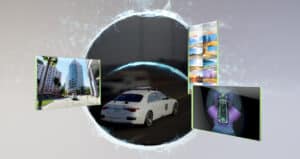
Into the Omniverse: World Foundation Models Advance Autonomous Vehicle Simulation and Safety
This blog post was originally published at NVIDIA’s website. It is reprinted here with the permission of NVIDIA. AI and OpenUSD accelerate safe, scalable autonomous vehicle development by enabling simulation-first approaches. Editor’s note: This blog is a part of Into the Omniverse, a series focused on how developers, 3D practitioners and enterprises can transform their

Why 4K HDR Imaging is Required in Front View Cameras?
This blog post was originally published at e-con Systems’ website. It is reprinted here with the permission of e-con Systems. Mobility systems require front-view cameras that depend on visual intelligence. Hence, the camera’s input is the starting point for every decision. Learn why 4K HDR imaging is critical in front-view cameras and explore five major

AI at the Edge: The Next Gold Rush
This blog post was originally published at SiMa.ai’s website. It is reprinted here with the permission of SiMa.ai. Generative AI has ushered in a new era of technological progress, reminiscent of the rise of the internet in the 1990s. Beyond the impressive chatbots we’re now used to, the constant flow of innovation has introduced new
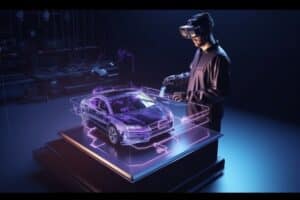
Infineon Technologies, NXP, and STMicroelectronics Face Rising Competition in $132 Billion Automotive Semiconductor Race
This market research report was originally published at the Yole Group’s website. It is reprinted here with the permission of the Yole Group. Yole Group’s Automotive Semiconductor Trends 2025 report maps the competitive shifts in semiconductors reshaping the future of automotive electronics. KEY TAKEAWAYS Top five players hold roughly 50% of the automotive semiconductor market,

Snapdragon Ride: A Foundational Platform for Automakers to Scale with the ADAS Market
This blog post was originally published at Qualcomm’s website. It is reprinted here with the permission of Qualcomm. The automotive industry is well into the transformation of vehicle architectures and consumer-driven experiences. As the demand for advanced driver assistance systems (ADAS) technologies continues to soar, Qualcomm Technologies’ cutting-edge Snapdragon Ride Platforms are setting a new standard for automotive
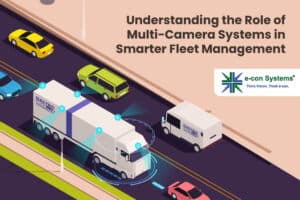
Understanding the Role of Multi-camera Systems in Smarter Fleet Management
This blog post was originally published at e-con Systems’ website. It is reprinted here with the permission of e-con Systems. Conventional single-camera units no longer meet the expectations of fleet management. That’s led to the emergence of multi-camera systems. Learn how multi-camera solutions are elevating this industry, how to choose the right camera, and the

